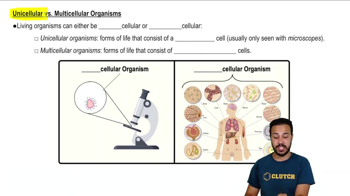True or false?
New major animal body plans have continued to evolve since the Cambrian about 550 million years ago.
 Verified step by step guidance
Verified step by step guidance Verified video answer for a similar problem:
Verified video answer for a similar problem:



 5:58m
5:58mMaster Overview of Animals - 1 with a bite sized video explanation from Jason
Start learning